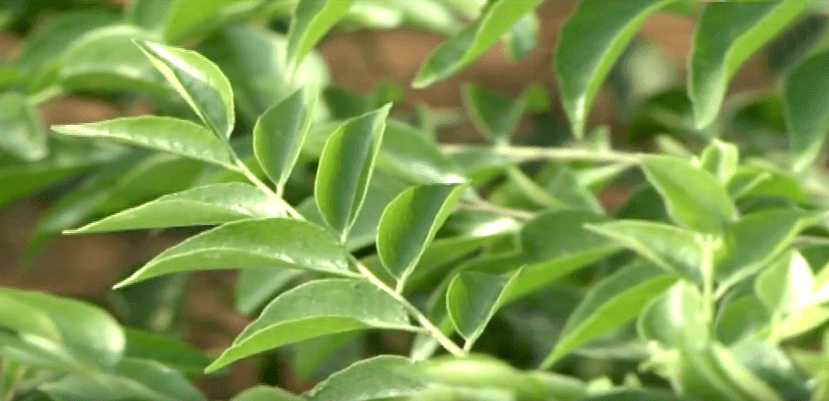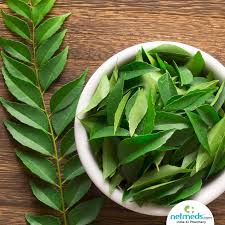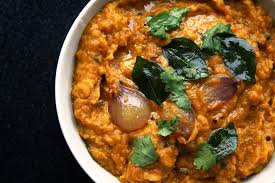The curry leaf tree or the curry leaves form a substantial part of Indian cooking especially in South India and south-western cooking in India. It is used as a flavouring and seasoning agent and added to all kinds of gravies and vegetable dishes. The curry leaf tree or Murraya koenigii is a tropical tree in the family Rutaceae and is native to the Indian subcontinent. Curry leaf tree is also called karuveppilai, sweet neem, Kadi Patta, curry vepilla, karivepaku or noroxingho pat depending on the region of India. Curry leaves are also found in Sri Lanka, parts of Thailand and Cambodia where it is used in native cooking.
The plant is identifiable as being 4–6 m (13–20 feet) tall, with a trunk up to 40 cm (16 in) diameter, having a distinct aroma. Even though the tree produces both flowers and fruits only the leaves are used and have a vast majority of health benefits. Curry leaves are small in size and long, slender, and oval in shape narrowing to a point, averaging 2-4 centimeters in length and 1-2 centimeters in width.
It is said that curry leaves have a vast majority of anti-disease properties and are used as an herb in ayurvedic and Siddha medicine. The leaves are said to have anti-inflammatory properties, antimicrobial properties and are eaten to help digestion and ease digestive issues. Since it is a carrier of iron and folic acid, it also keeps anemia at bay. It helps to increase the body’s capacity to absorb iron and folic acid. It is also used to revitalize hair and is used as a treatment for dandruff.
Curry leaves are often sautéed with oil, mustard seeds, chilli, chilli powders, turmeric and other spices to give a mixture of spiced flavouring to curries, vegetable dishes and meat dishes. The leaves can also be cooked and ground with coconut and chillies and made into a chutney or Kariveppilai Thuvaiyal that can be eaten with roti (Indian flatbread) and rice.
Dishes from Kerala which include curry leaves range from buttermilk (moru) to thorans (cooked vegetables), meen curry (fish curry). Dishes in Karnataka and Tamil Nadu include – curry leaves rice (karibevu bath), curry leaves powder (karuveppilai podi), coconut curry leaves chutney for dosa and idly and Kuzhambu Recipes. North Indian recipes for curry leaves include kadhi and variants of chaas or buttermilk. Assamese recipes for fish curries also use curry leaves for seasoning. some meat dishes of chicken, fish, mutton all include the use of curry leaves.





